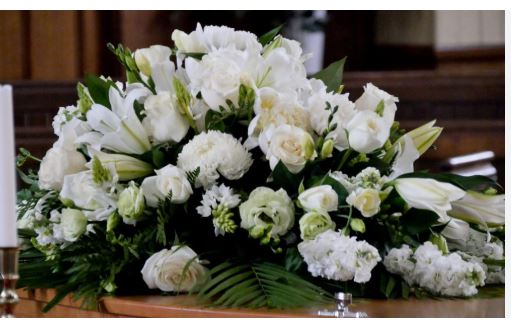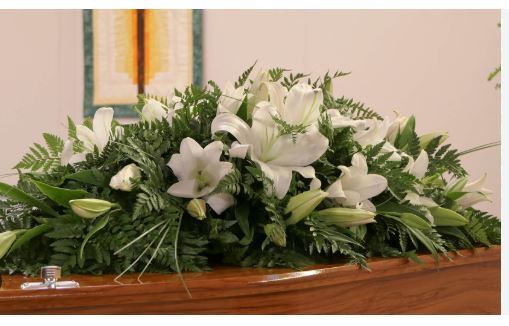
Flowers at funerals serve as silent messengers, conveying emotions that words often fail to capture. They bring a sense of peace to somber settings, softening the atmosphere with their presence. Whether arranged in elaborate displays or offered as simple tokens, they reflect a universal language of care and respect.
The symbolism behind these blooms varies widely, rooted in tradition and personal meaning. Some represent purity and renewal, others enduring love or quiet strength, allowing mourners to choose based on the life being honored. Colors play a role too—soft whites, deep reds, or gentle pastels—each shade adding its own layer of sentiment.
Practically, they adapt to the occasion’s needs. Larger arrangements might frame a service, standing tall as a tribute, while smaller ones offer intimate comfort to those grieving. Potted options even extend their life beyond the day, rooting memories in something tangible and growing.
Culturally, their role shifts—vibrant in some places to celebrate a journey, muted in others to mourn a loss. Yet across these differences, they remain a constant, bridging the gap between the living and the departed with beauty and grace.

Flowers For Funerals
Lilies
Lilies, particularly white ones, are perhaps the most iconic funeral flower. They symbolize purity, innocence, and the restored peace of the departed soul. Their elegant shape and soothing fragrance make them a staple in arrangements like casket sprays or standing wreaths, offering hope to grieving families.
Roses
Roses are versatile and widely loved. Red roses express deep love and respect, making them ideal for a spouse or close family member. White roses signify reverence and purity, while pink roses convey gratitude and appreciation—perfect for honoring a friend or mentor.
Carnations
Carnations are long-lasting and fragrant, making them practical for extended services. White carnations represent pure love and innocence, pink ones symbolize remembrance, and red ones show admiration. They’re often used in wreaths or mixed bouquets.
Chrysanthemums
Known as “mums,” chrysanthemums are strongly tied to funerals in many cultures. In Europe, they’re a symbol of death and mourning, while in the U.S., they represent honor and truth. White mums evoke innocence, and their vibrant colors can celebrate a life well-lived.
Gladioli
These tall, striking flowers stand for strength, integrity, and character. They’re often used in fan-shaped sprays, adding height and dignity to funeral displays. Gladioli send a message of upliftment, honoring the deceased’s moral qualities.
Orchids
Orchids, especially pink or white varieties, symbolize everlasting love and sympathy. Their delicate beauty and longevity make them a thoughtful choice, often sent as potted plants to provide ongoing comfort to the family.
Hydrangeas
Hydrangeas represent heartfelt sincerity and gratitude. Available as cut flowers or potted plants, they bloom for years if planted, serving as a lasting tribute. Their lush, full appearance adds texture to arrangements.
Daffodils
Bright and cheerful, daffodils symbolize renewal and new beginnings. They’re a fitting choice to encourage hope amid sorrow, often sent in yellow to reflect positivity and the promise of spring-like rebirth.
Tulips
Tulips bring elegance and a message of hope. White tulips stand for forgiveness and peace, while yellow ones convey cheerfulness. They’re subtle yet uplifting, suitable for bouquets or basket arrangements.
Forget-Me-Nots
These small, blue flowers carry a clear message: remembrance. They’re a poignant way to say the deceased will live on in memory. Often tucked into larger arrangements, they add a personal, sentimental touch.
Hyacinths
Hyacinths express sorrow and deep emotion, with purple varieties symbolizing regret and sympathy. Their sweet scent and vibrant blooms make them a comforting presence at services, often used in mixed bouquets.
Peace Lilies
Technically a plant, peace lilies are a popular funeral gift. They symbolize peace, innocence, and the soul’s rebirth. Sent potted, they thrive indoors and offer a lasting reminder of support, blooming long after the service ends.
Marigolds
Marigolds are tied to grief and remembrance in many traditions, notably in Día de los Muertos celebrations where their bright orange and yellow hues guide spirits back to the living. They symbolize the beauty of life amid loss and are often used in vibrant wreaths or scattered as petals.
Violets
Small and unassuming, violets represent modesty, faithfulness, and everlasting affection. Purple violets convey mourning, while blue ones suggest peace. They’re a subtle addition to bouquets or a standalone token of quiet devotion.
Snapdragons
Snapdragons stand for grace under pressure and inner strength. Their tall spikes of blooms, available in white or soft pastels, add elegance to arrangements while symbolizing resilience—a tribute to a life bravely lived.
Iris
The iris, named for the Greek goddess of the rainbow, signifies hope, wisdom, and valor. Purple irises are especially linked to mourning, while blue ones offer comfort. Their striking shape makes them a focal point in sprays or vases.
Camellias
Camellias exude understated beauty and carry meanings of gratitude and admiration. White camellias suggest purity, pink ones express longing, and red ones denote deep love. They’re often gifted as potted plants or cut flowers for their lush, layered petals.
Asters
These star-shaped flowers symbolize patience, love, and a farewell to the departed. In mythology, asters were said to mark the tears of the gods, making them a poetic choice. White or purple asters blend well into wreaths or mixed bouquets.
Zinnias
Zinnias bring a burst of color—pink for enduring affection, white for goodness, red for steadfastness. They represent thoughts of absent friends and are a cheerful yet respectful way to celebrate a vibrant life, often used in casual arrangements.
Dahlias
Dahlias signify dignity, elegance, and inner strength. Available in various colors—white for purity, red for passion—they’re bold yet refined, making them suitable for larger displays or as a standalone tribute to a remarkable individual.
Sweet Peas
Sweet peas offer a delicate fragrance and symbolize blissful departure or gratitude for shared time. Their soft pinks, purples, and whites add a gentle touch to bouquets, evoking tender memories of the deceased.
Pansies
Derived from the French word pensée (thought), pansies represent remembrance and contemplation. Their heart-shaped petals in purple or yellow tones make them a sweet, thoughtful inclusion in smaller arrangements or as a graveside offering.
Anemones
Anemones, often in white or deep red, symbolize fading hope or the fragility of life—a somber yet beautiful nod to mortality. In Greek myth, they sprang from Aphrodite’s tears, linking them to love and loss, ideal for poignant tributes.
Cornflowers
Cornflowers, with their vivid blue hue, stand for eternity and delicate beauty. They’re less common but deeply meaningful, often used to honor someone cherished or to add a unique accent to traditional arrangements.
Stock
Stock flowers, with their spicy-sweet scent, symbolize lasting beauty and a life well-lived. White stock conveys purity and sympathy, while purple suggests eternal bonds. Their clustered blooms work well in bouquets or as fillers in larger displays.
Freesias
Freesias are delicate and fragrant, representing innocence, trust, and friendship. White freesias are a common funeral choice for their purity, while their soft colors—yellow, pink—add a gentle lift. They’re often used in sprays or as a standalone gesture.
Gerbera Daisies
Gerbera daisies bring a touch of brightness, symbolizing innocence and cheer amid sorrow. White gerberas suggest purity, pink ones admiration, and red ones love. Their bold, simple shape makes them a striking addition to wreaths or centerpieces.
Larkspur
Larkspur, a cousin to delphiniums, stands for an open heart and strong attachment. White or purple larkspur fits funerals, evoking dignity and grace. Its tall, spiky form adds vertical elegance to arrangements, honoring the deceased’s spirit.
Delphiniums
Delphiniums symbolize heavenly connection and dignity. Their towering blue or white blooms suggest transcendence, making them a fitting choice for someone deeply spiritual or admired. They shine in standing sprays or memorial vases.
Primroses
Primroses signify youth, renewal, and eternal love. Pale yellow or white varieties are subtle yet meaningful, often planted at gravesites or given as potted gifts to represent life continuing in memory of the departed.
Cyclamen
Cyclamen flowers nod downward, symbolizing resignation and goodbye. White or pink cyclamen express sympathy and tender feelings, often sent as potted plants to offer lasting comfort during the grieving process.
Alstroemeria
Known as the Peruvian lily, alstroemeria represents devotion and mutual support. Its soft colors—white, pink, or peach—blend beautifully in bouquets, conveying friendship and care for both the deceased and their loved ones.
Snowdrops
Snowdrops, small and white, bloom even in late winter, symbolizing hope and consolation in dark times. They’re a quiet, understated choice, often tucked into arrangements or planted as a living memorial.
Heliotrope
Heliotrope’s deep purple clusters signify devotion and eternal love. Its rich fragrance and somber hue make it a thoughtful accent in funeral flowers, reflecting unwavering loyalty to the departed.
Bluebells
Bluebells evoke humility and gratitude, their drooping bells suggesting a gentle farewell. Associated with constancy, they’re a woodland-inspired pick for natural arrangements or to honor someone tied to the outdoors.
Lisianthus
Lisianthus, with its rose-like blooms, stands for appreciation and charisma. White or purple lisianthus offers peace and remembrance, while its soft texture and layered petals add sophistication to bouquets or casket adornments.